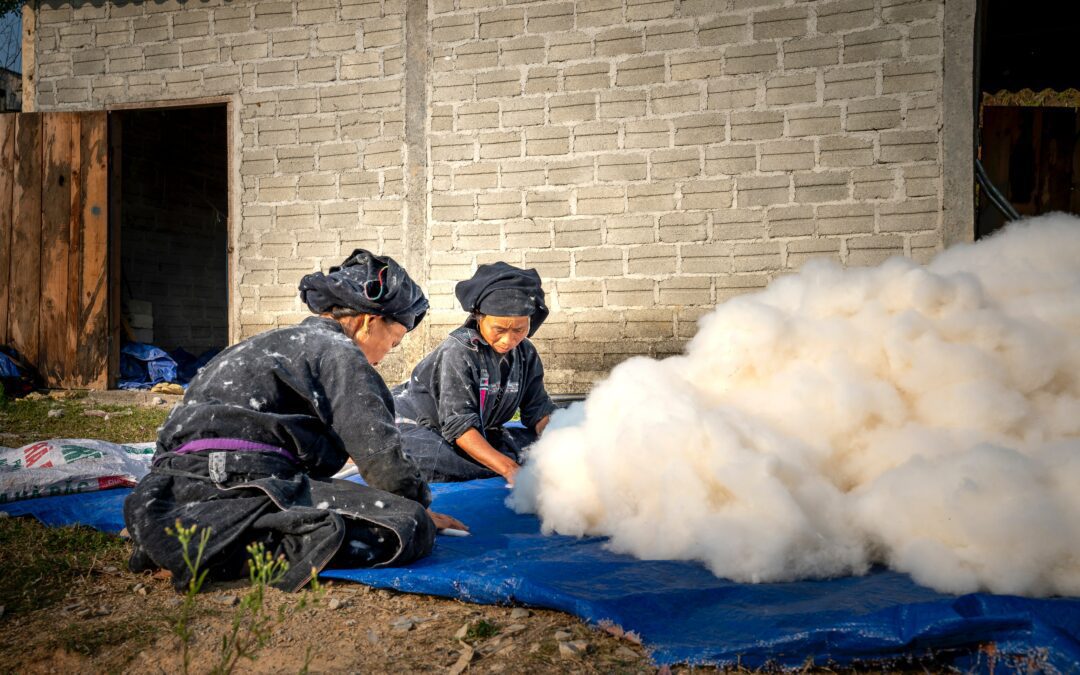190 million women work in global supply chains, 48% of the total workforce. They are mostly working in low skilled, low paid jobs at the beginning of the supply chain (production).
Women face gender-specific impacts in all sectors, but are especially impacted in the so-called high-risk sectors for gender inequality. Given that gender issues frequently intersect with other grounds for discrimination, many women are further discriminated against based on intersecting identities such as their ethnic origin, age, class, caste, migration status, gender identity and/or other factors.
Engaging with suppliers from the start and bringing them along on the journey with you and supporting them in developing and implementing robust workplace policies based on equal treatment of all workers will ensure that the voices of women workers in particular, are heard.
What are the high risk sectors?
The most high risk sectors when it comes to gender inequality in the supply chain are: the agri-food sector — since it provides low paid and low skilled production jobs and seasonal workers, with a high percentage of women workforce; garment & textiles — which has the same issues as the first one; technology sector — since there is a very low employment rate of women, a significant gender pay gap and gender imbalance in leadership positions; We see a similar situation in the finance sector.
What are high risk characteristics?
Both women and men are negatively impacted by corporate activities – however, women experience adverse impacts of business activities differently and disproportionately to men – whether regarding their rights to land ownership, their access to resources, including capital, networks and information, the right to health, to be free of violence and the threat of violence, or their right to decent work.
Sectors with a higher risk for gender-related adverse human rights impacts, often have the following characteristics:
- The majority of the workforce is women, who are active in low-skilled and low-paid jobs;
- Women are under-represented (gender-imbalance) at all levels and throughout the value chain;
- The sector is operating in a partly informal manner.;
- The sector is driven by seasonal, migrant and/or piece-work;
- The sector is active in countries with limited enforcement of (labor) legislation;
- The sector is active in countries with specific cultural/religious practices that can be discriminatory for women;
Consequences of gender inequality
Gender inequality in organizations is a complex issue that can be seen in organizational structures, processes, and practices. It not only affects individual employees, but can also affect the overall economic performance of the organization. Besides the fact that gender discrimination is unlawful, discriminating on the basis of gender has far reaching implications for everyone in the organization.
Here are some of the harmful effects of gender discrimination in the workplace: mental health problems — gender discrimination victims often experience harassment which can lead to increased depression and anxiety, and such an effect could extend to other members of the organization; increased turnover — because there is a negative impact on one’s happiness and health, sexual harassment increases the chances of employee turnover. Women, more often than men, leave high paying executive positions, citing lack of opportunities, inflexible work hours and a lack of female peers; job dissatisfaction — when there is gender inequality happening at the workplace, discriminated individuals never reach the level needed for a high-status job and therefore do not have a high satisfaction with their job; bad reputation — public allegations of gender discrimination can hurt the brand image of a company as well as its stock price; the huge gender pay gap.
On the other hand,there are several benefits given by the implementation of gender-responsive procurement : among others, the ones that rock in importance are definitely the increased revenue and reduced procurement spend; increased productivity; greater supplier availability and resilience; enhanced brand reputation.
At SheSupplies we think that applying a gender lens on your business activities and assessing the impact of your sourcing and procurement policies and practices will not only increase your understanding of the different challenges and needs of women and men (and other gender identities’ workers), it will also help to inform strategic actions and programs to enhance workers rights that benefit all.
Author: Greta Pizii

